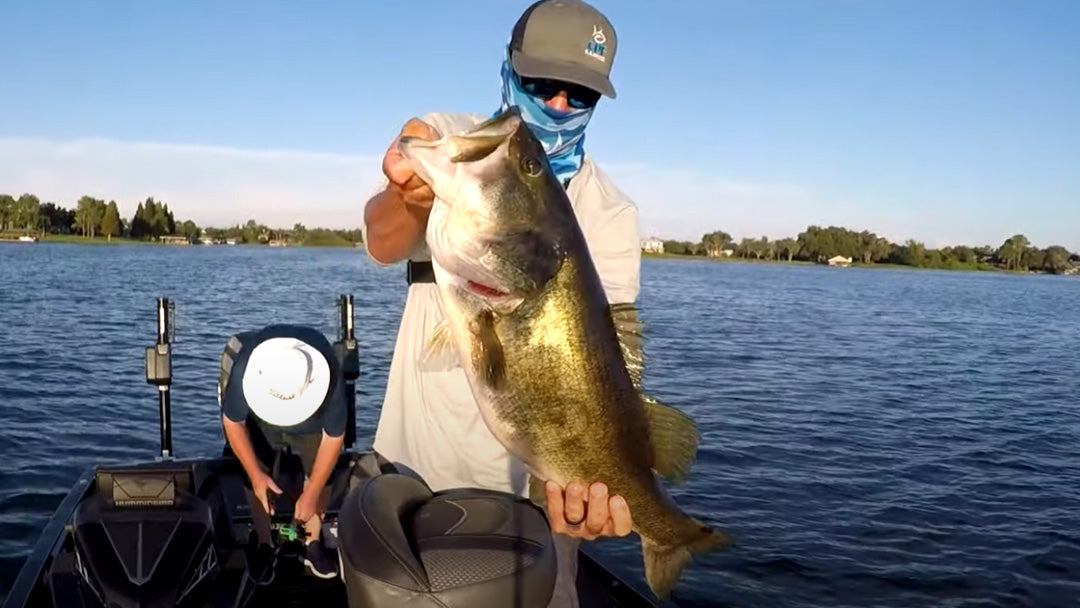Swimbaits are effective for catching bass because they closely mimic the appearance and movement of small fish, which are a natural prey for bass. The lifelike appearance of swimbaits can trigger the predatory instincts of bass, causing them to strike at the bait.
Why are swimbaits so effective for catching bass?
Swimbaits are also versatile lures that can be fished in a variety of ways, including slow retrieves, fast retrieves, and even on a jig head. This versatility allows anglers to adapt their technique to the preferences and behavior of the bass they are targeting.
In addition to their lifelike appearance and versatility, swimbaits are also effective because they are often weighted, which allows them to be fished at various depths in the water column. This allows anglers to target bass that are holding at different depths and can be especially effective when fishing in deep water or around structure.
Overall, swimbaits are a highly effective lure for catching bass because they mimic the appearance and movement of natural prey, can be fished in a variety of ways, and can be fished at different depths in the water column.
How do you fish a swimbait for bass?
There are many ways to fish a swimbait for bass, and the best technique will depend on the specific conditions you are fishing in and the preferences of the bass you are targeting. Here are a few tips to help you get started:
-
Choose the right swimbait: Start by selecting a swimbait that is appropriate for the size and type of bass you are targeting, as well as the conditions you are fishing in. For example, you might use a smaller swimbait in clear water or when targeting smaller bass, while a larger swimbait might be more effective in murky water or when targeting larger bass.
-
Rig your swimbait: There are several ways to rig a swimbait, depending on the type of swimbait you are using and the technique you are employing. Some common options include Texas-rigging, Carolina-rigging, and using a jighead. Each of these techniques has its own benefits and drawbacks, so it's worth experimenting to see which works best for you.
-
Choose the right retrieve: Swimbaits can be fished with a variety of retrieves, including slow and steady retrieves, fast and erratic retrieves, and everything in between. The best retrieve will depend on the preferences of the bass you are targeting and the conditions you are fishing in.
-
Pay attention to your surroundings: When fishing with a swimbait, it's important to pay attention to your surroundings and look for signs of where the bass might be holding. This might include structures like weeds, rocks, or drop-offs, as well as areas with a lot of baitfish activity.
-
Experiment with different techniques: Finally, don't be afraid to experiment with different techniques and see what works best for you. This might include using different retrieves, fishing at different depths, or trying different colors and sizes of swimbaits. The more you practice, the better you will become at fishing with swimbaits and the more success you will have.
What is the best color swimbait for bass?
The best color swimbait for bass can vary depending on the specific conditions you are fishing in and the preferences of the bass you are targeting. Here are a few general guidelines to help you choose the right color:
-
Consider the water clarity: In clear water, natural colors like silver, white, and chartreuse can be effective because they closely mimic the appearance of small baitfish. In murky or stained water, bright colors like chartreuse, orange, and yellow can be more visible to bass and may be more effective.
-
Match the forage: Another factor to consider is the type of forage that bass are feeding on in the area you are fishing. If the bass are feeding on shad, for example, a swimbait in a shad pattern (such as silver or white) might be more effective. If the bass are feeding on crawfish, a swimbait in a crawfish pattern (such as red or brown) might be more effective.
-
Experiment with different colors: Finally, don't be afraid to experiment with different colors and see what works best for you. Some anglers have success with very specific colors under certain conditions, while others have success with a variety of colors. The more you practice, the better you will become at identifying the best colors for the conditions you are fishing in.
What size swimbait is best for bass?
The best size swimbait for bass can vary depending on the specific conditions you are fishing in and the preferences of the bass you are targeting. Here are a few general guidelines to help you choose the right size:
-
Consider the size of the bass you are targeting: If you are targeting smaller bass, a smaller swimbait (such as a 3-inch or 4-inch swimbait) might be more effective. If you are targeting larger bass, a larger swimbait (such as a 5-inch or 6-inch swimbait) might be more effective.
-
Match the size of the forage: Another factor to consider is the size of the forage that the bass are feeding on in the area you are fishing. If the bass are feeding on smaller baitfish, a smaller swimbait might be more effective. If the bass are feeding on larger baitfish, a larger swimbait might be more effective.
-
Experiment with different sizes: Finally, don't be afraid to experiment with different sizes and see what works best for you. Some anglers have success with very specific sizes under certain conditions, while others have success with a variety of sizes. The more you practice, the better you will become at identifying the best sizes for the conditions you are fishing in.


